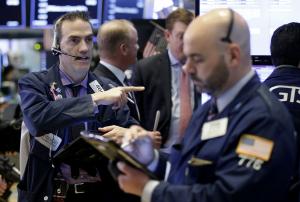April 13 (UPI) — Expectations that OPEC’s balancing act is working helped lift oil prices higher on Friday, but gains may be limited by the possibility of U.S. production gains.
Two years ago in Vienna, members of the Organization of Petroleum Exporting Countries joined forces with big producers like Russia in an agreement to sideline about 2 percent of global demand in an effort to erase the market surplus that pushed oil prices below $30 per barrel in early 2016.
“It is not for us to declare on behalf of the Vienna agreement countries that it is ‘mission accomplished,’ but if our outlook is accurate, it certainly looks very much like it,” the International Energy Agency stated in its latest monthly market report.
On that, the price for Brent crude oil was up 0.33 percent as of 9:17 a.m. EST to $72.26 per barrel. West Texas Intermediate, the U.S. benchmark for the price of oil, was up 0.27 percent to $67.25 per barrel.
Crude oil prices were supported for much of the week by a risk premium tied to the possibility for direct multilateral military engagement in Syria. The IEA’s report cautioned that the recent price trend for crude oil might not be sustainable on geopolitical risk alone.
Crude oil prices may be influenced later in the trading day when Baker Hughes publishes data on exploration and production trends. Reported as rig counts, gains in the United States in particular could drag on the markets as it would indicate a possibility of future supply-side strains.
The United States is on pace to become the world’s largest crude oil producer by the end of the year.
In the broader markets, momentum could be driven by comments Friday morning from Boston Federal Reserve Bank President Eric Rosengren. In general, he said, there’s a positive sentiment about growth in the United States, the world’s leading economy, but there are risks on the horizon.
On U.S.-Chinese trade tensions, he said that was in part behind some of the market volatility in recent sessions. Over the long term, he said that with U.S. employment below what some consider “the natural state,” there’s a real risk of a downturn.
“Periods in which unemployment dipped significantly and persistently below the estimated natural rate historically have tended to generate conditions that resulted in a recession,” he said.

COMMENTS
Please let us know if you're having issues with commenting.